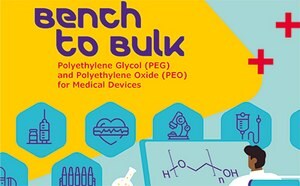隐形眼镜和牙科制品生产
作为快速发展的学科领域,隐形眼镜和牙科制品制造利用材料和制造技术创新来增进牙科和口腔健康。与我们合作实现高质量的原材料采购,并通过灵活的批量和定制选择,确保从中试放大到生产规模的供应链安全。
隐形眼镜制造
隐形眼镜是用于矫正视力、治疗和美容应用的眼科修复设备。它们通常用聚合物或硅树脂-水凝胶制成,因为这些材料具有优异的透氧性和透水性。材料的选择也会影响表面光滑度、UV辐射吸收以及耐撕裂和防止表面缺陷的能力。通过利用成型工艺、车床切割和等离子加工等精密制造技术,我们能够进一步定制隐形眼镜特性。为了减轻感染和发炎副作用并提高消费者的舒适度和安全性,目前研究正着重于开发新型单体、聚合物化学试剂和制造方法。
牙科制品制造
牙科医学旨在管理口腔健康,对抗和治疗疾病,并矫正牙齿和下颌排列不齐。牙科制品制造利用各种固态和聚合物合成工艺、加工和表面功能化方法来制备牙科用材料、产品和设备。填料、牙套、牙冠和牙桥使用树脂复合材料制成;玻璃离子交联聚合物和合金可用于修复性牙科应用。牙科印模是利用藻酸盐材料来形成牙齿和软组织3D模型的准确凹模。美容牙科护理应用包括过氧化氢漂白牙齿,以及用光固化树脂粘结剂将瓷贴面粘结在牙齿上。
牙科材料研究关注的重点是可以改善弹性、耐用性、生物相容性和抗菌特性的下一代单体。借助计算机辅助设计(CAD)和计算机辅助制造(CAM),现在我们可以使用3D打印快速经济地生产定制式假牙、牙科植入物和牙齿矫正装置。
相关技术文章
- The manufacture of monomers for use in ophthalmic applications is driven by the need for higher purity, improved reliability of manufacturing supply, but ultimately by the need for the increased comfort, convenience, and safety of contact lens wearers. Daily wear contact lenses have the potential to fill this need for many customers; however, their widespread use is constrained by higher costs compared to weekly- or monthly-based lenses. New approaches that improve cost structure and result in higher quality raw materials are needed to help make contact lenses more affordable and accelerate growth of the contact lens market.
- We offer a continuously expanding selection of high-purity monomers and polymers for ophthalmic applications, along with a full range of initiators, crosslinkers, dyes, and solvents.
- Innovation in dental restorative materials is driven by the need for biocompatible and natural-appearing restoration alternatives. Conventional dental materials like amalgam and composite resins have inherent disadvantages.
- The Progress in Development of Dental Restorative Materials
- Atom transfer radical polymerization (ATRP) has emerged as one of the most successful synthetic techniques for the preparation of polymers with predetermined molecular weights, narrow molecular weight distributions, and high degrees of chain end functionalities.
- 查看完整内容 (8)
相关实验方案
- We present an article about RAFT, or Reversible Addition/Fragmentation Chain Transfer, which is a form of living radical polymerization.
- RAFT (Reversible Addition-Fragmentation chain Transfer) is a form of living radical polymerization involving conventional free radical polymerization of a substituted monomer in the presence of a suitable chain transfer (RAFT) reagent.
- An article about the typical procedures for polymerizing via ATRP, which demonstrates that in the following two procedures describe two ATRP polymerization reactions as performed by Prof. Dave Hadddleton′s research group at the University of Warwick.
- 查看完整内容 (3)
登入以繼續
若要繼續閱讀,請登入或建立帳戶。
還沒有帳戶?

